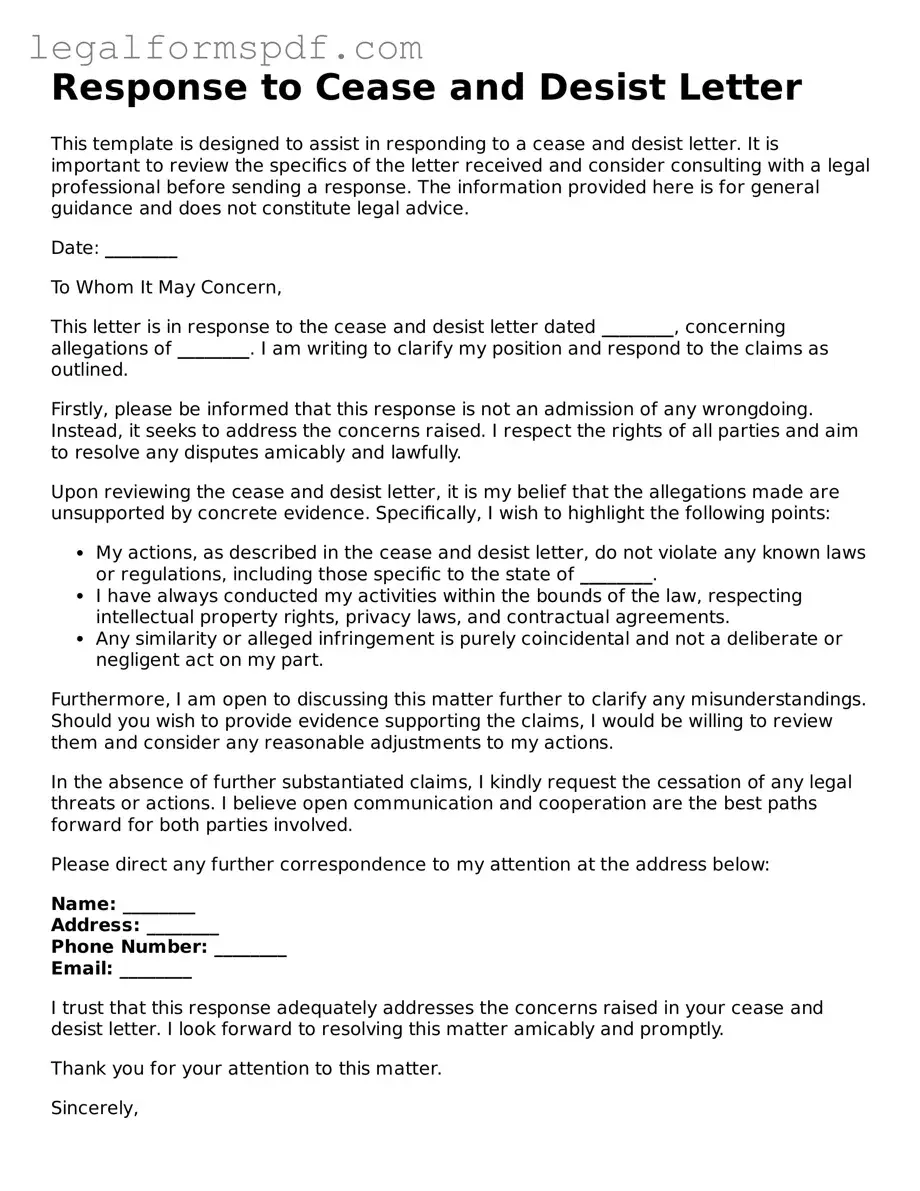What is a Response to a Cease and Desist Letter?
A Response to a Cease and Desist Letter is a formal reply sent by an individual or entity who has received a cease and desist letter. The response can either agree to the terms set out in the original letter, refute them, or propose an alternative course of action.
When should one respond to a Cease and Desist Letter?
It is advisable to respond to a Cease and Desist Letter as soon as possible, generally within the time frame requested in the letter, if provided. Delaying a response could escalate the situation, possibly leading to legal action.
Is it mandatory to respond to a Cease and Desist Letter?
No, it is not legally required to respond to a Cease and Desist Letter. However, sending a response is often beneficial as it can help resolve the dispute outside of court and demonstrate to a judge, if it comes to that, that you attempted to address the issue.
What should be included in a Response to a Cease and Desist Letter?
Your response should clearly state your position regarding the claims made in the cease and desist letter. You should also include any evidence supporting your stance, outline your legal rights, and, if relevant, propose a resolution to the dispute.
Can I write a Response to a Cease and Desist Letter myself?
Yes, you can draft your response yourself. However, considering the potential legal implications, it might be wise to consult with or have an attorney review your response before sending it.
What tone should I use in a Response to a Cease and Desist Letter?
The tone of your response should be professional and respectful, regardless of how aggressive or unfounded you may find the original cease and desist letter. Avoid using emotional language or personal attacks.
What if I agree with the Cease and Desist Letter?
If you agree with the demands or claims made in the cease and desist letter, your response should state your agreement and detail how and when you will comply with the demands.
What if I disagree with the Cease and Desist Letter?
If you disagree with the claims or demands, your response should clearly state your reasons for disagreement. Provide any evidence or legal basis that supports your perspective and, if possible, offer an alternative solution.
How should I send my Response to a Cease and Desist Letter?
Your response should be sent in a manner that can be tracked and verified, such as certified mail, to ensure it is received by the sender of the original cease and desist letter.
What happens after sending a Response to a Cease and Desist Letter?
After your response has been sent, the sender of the original cease and desist letter may agree to your terms, negotiate further, or, in some cases, initiate legal proceedings. Each situation is unique, and the course of action will depend on the specifics of the dispute and the parties involved.
